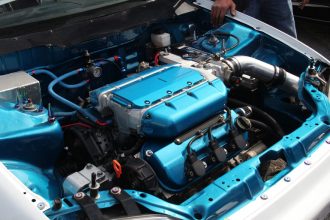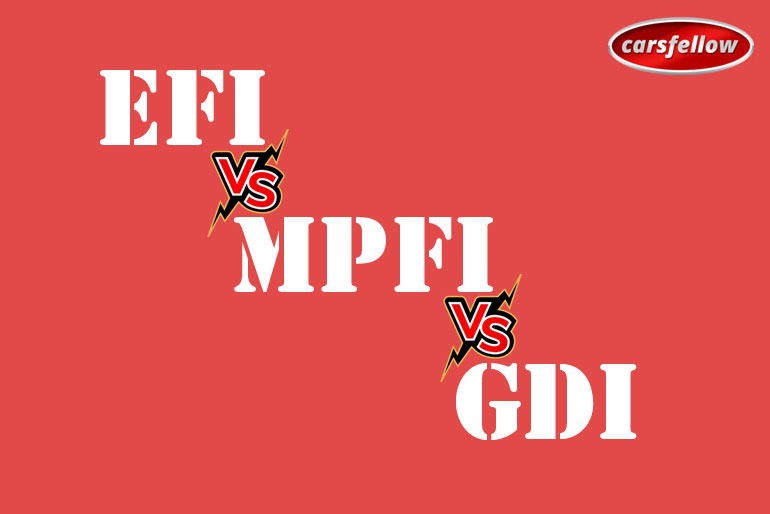If you don’t know the difference between EFI, MPFI, and GDI, then don’t worry. We are going to discuss the features of EFI, MPFI, and GDI along with the comparison. So, what do these terms EFI, MPFI, and GDI mean exactly? EDI stands for “electronic fuel injection,” whereas MPFI means “multi-point fuel injection, and GDI stands for “gasoline direct injection.”
Here we will discuss the features and functioning of EFI, MPFI, and GDI and which one is better for you.
What is Electronic Fuel Injection Technology?
The petrol engine’s performance is based on the supply of fuel. If the fuel supply is excessive, it will be more expensive and will impact the running. Whereas, if the fuel supply is less, you will get the engine heat up, and the engine will lose its power.
In the 1970s, most of the manufacturers were using a carburetor that mixes the fuel with air. S People started using catalytic converters to minimize engine emissions since the strict policies had been implemented that were causing harm in the pollution.
Catalytic converters were placed in the exhaust in the vehicle, and it was witnessed that it only worked well in certain conditions as it gets damaged due to rich mixtures. It was observed that the old-school carburetor having a rough time working to its maximum capacity as fuel was inadequately delivered to the catalytic converter. And then, Electronic fuel injection – EFI technology came into the market to overcome the performance issues of petrol engines.
Electronic Fuel Injection – EFI
Electronic control unit – ECU is placed in the electronic fuel injection to deliver adequate fuel pressure, various sensors, and fuel injectors. Fuel injectors and multiple types of sensors vary due to the system’s complexity, the number of cylinders, and the engine’s configuration. With the help of intake and exhaust, these sensors in the machine provide information to the ECU of air and water temperature, shaft and crank position, throttle position, and gas composition.
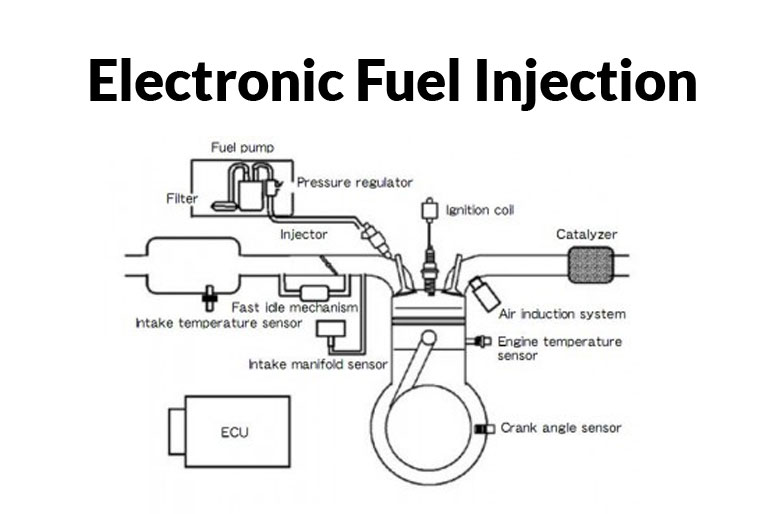
Measuring airflow is an important aspect of the engine, and it can be gauged by a pressure sensor or mass airflow sensor. ECU has a task to evaluate the data received and match it with the available data table, referred to as a “MAP.” It will show the fuel needed in a particular situation and adjust the fuel supply using the injectors according to the requirement.
The Carburetor seems to struggle with fine-tuning the mixture for the load and conditions on various occasions. At the same time, EFI does this job efficiently on the other hand. One fuel injector is mostly for the single cylinder and is positioned in the inlet runners, leading to the cylinder.
It sprays a small amount of fuel through the nozzle to create a spark, and it is easily mixed with air in the intake. Most of the ECUs control the other parts of the engine, including the valve train and ignition system, to improve efficiency, performance, and drivability.
Pros & Cons of Electronic Fuel Injection System
Pros
- Variation of fuel/air ratio is quite less, and it enhances the performance of the engine.
- It eliminates manifold wetting due to direct fuel injection to the cylinder.
- It eliminates the ice formation at the throttle plate.
- Reduces the height of the engine as the injection unit is not big.
- Almost minimize the knocking due to improved vaporization and atomization system.
- It improves the engine’s volumetric efficiency
- Even at low speeds, it provides good atomization.
Cons
- There is a possibility of a breakdown of sensors
- Complexity in servicing.
- Costly maintenance.
Multi-Point Fuel Injection – MPFi
MPFi system was initially only manufactured for airplane engines. Currently, it is being used in commercial vehicles as well. It is known as the most advanced gasoline injection system in the automobile industry.
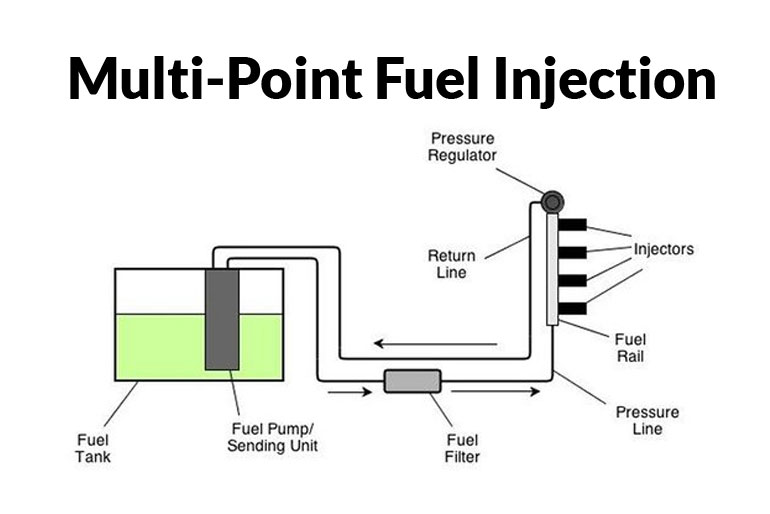
Multi-Point Fuel Injection is a compilation of electrical engineering with mechanical, electronics, and computers, making the systems more efficient and advanced. Let’s compare MPFi with single-point fuel injection. It is seen that single-point fuel injection has only a single fuel injector location in the middle, which supplies fuel to several cylinders available in the engine. At the same time, a multi-point fuel injection system has separate fuel injectors that supply fuel to the cylinders from the fuel storage tank.
In the MPFI system, an electronic fuel pump sprays the fuel into the engine intake manifold to deliver an accurate air/fuel ratio. The engine sprays the fuel to the cylinder with the help of suction pressure (The vacuum technique is used to provide fuel in the Carburetor). Each of the fuel injectors receives the fuel equally by using the electric fuel pump, and this process happens for each injector once in every cycle.
Types of MPFI System
- D-MPFI System refers to a manifold fuel injection system.
- L-MPFI System refers to a port fuel injection system.
Following are the components used in the MPFI system
- Air Filter, which removes the solid particles from the air.
- E-sensors help to measure coolants, gas, and exhaust temperature as well as throttle and speed positions.
- The electronic control unit – ECU controls the quality of fuel and ignition timing.
- Solenoid Injectors.
Pros & Cons of The MPFI System
Pros
- It improves the engine’s volumetric efficiency
- It generates more power than the carburetion system.
- It enhances the life of the engine as vibration is very low in MPFI-equipped engines.
- The response is very quick in case of sudden deceleration or acceleration.
- It improves mileage and minimizes fuel consumption.
Cons
- It needs more room/space to fit in.
- Complex and costly.
Gasoline Direct Injection – GDI
GDI is being used by modern vehicles as the traditional multi-point fuel injection injects fuel at low pressure into the intake. The GDI engine has a common line that injects fuel at high pressure into the cylinder’s combustion chamber directly. It has more control over injection timing and quantity of the fuel delivered.
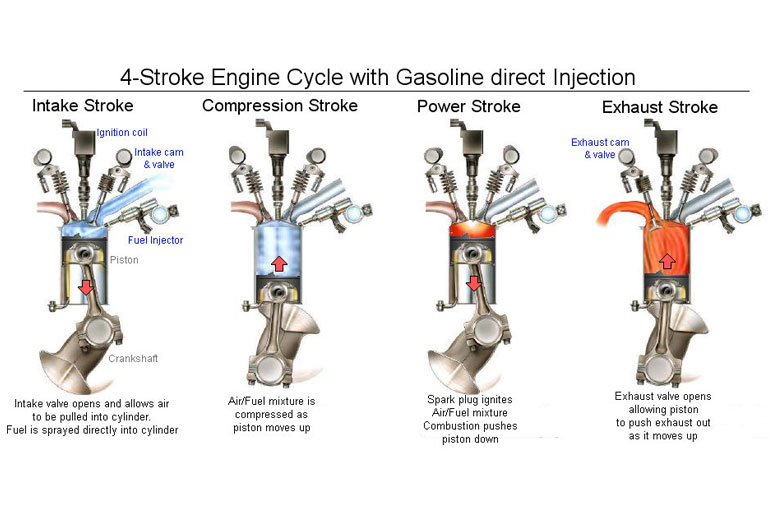
Conventional fuel injections lack many benefits, but GDI engines cater to all those nitty-gritty. GDI can pull more power even from the smaller engine. At the same time, it reduces the emissions of chemicals and improves fuel efficiency.
Another great feature that is available in modern gasoline is that it comes with a pack of detergents and plays an important part in washing the exhaust and intake valves. Minor amounts of dirt from intake and throwback carbon bulk on the intake walls by GDI engines directly. With time, carbon bulk-up restricts airflow to the cylinders, and the aid of torque and fuel economy is compromised, which is the key in the GDI system in the first place.
Conclusion
Here, we have discussed the differences and features of EFI, MPFI, and GDI engines. EFI sensors in the engine work on intake and exhaust-related information to the ECU of air and water temperature, shaft and crank position, throttle position, and gas composition. In contrast, MPFI injection is a method to inject fuel into an internal engine via multiple ports located on the intake valve of every cylinder.
GDI engine is commonly used in all the latest vehicles. It helps a common fuel line to inject gasoline at pretty high pressure into the combustion chamber of every cylinder.



